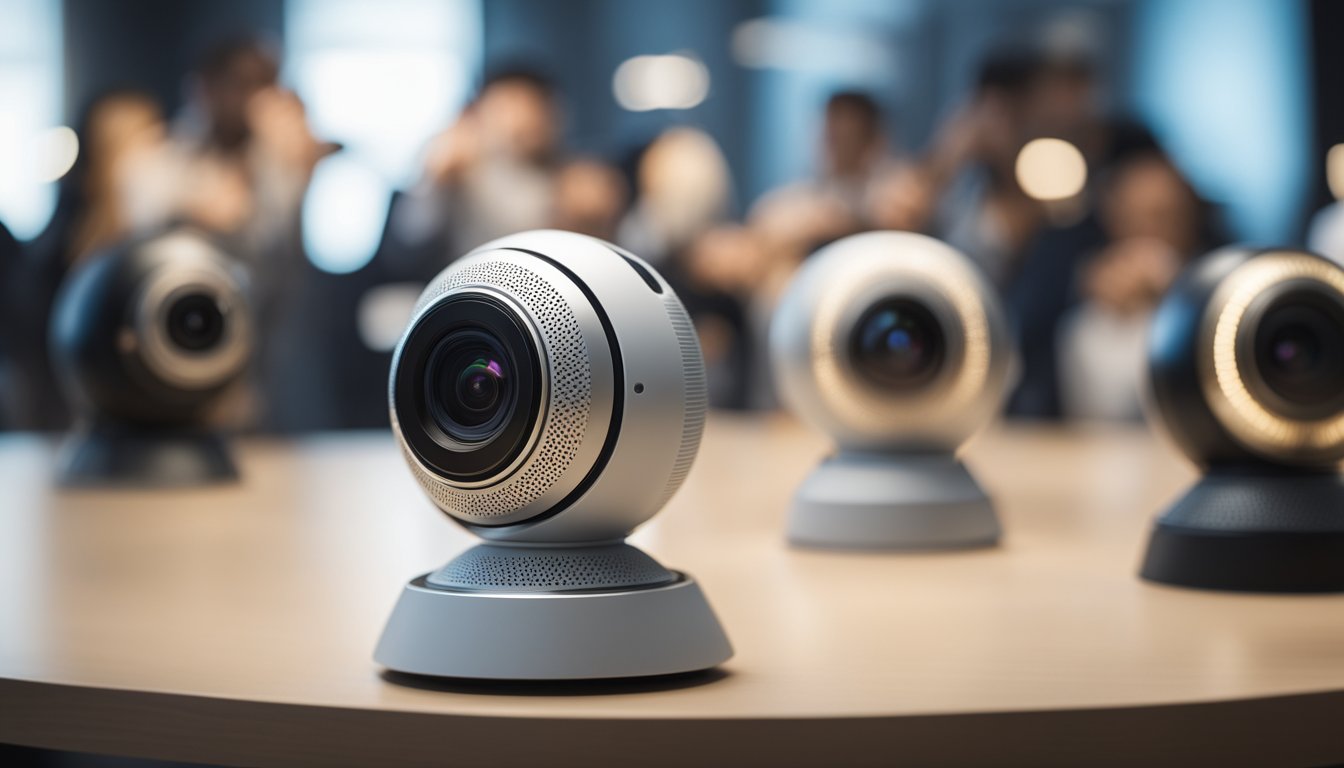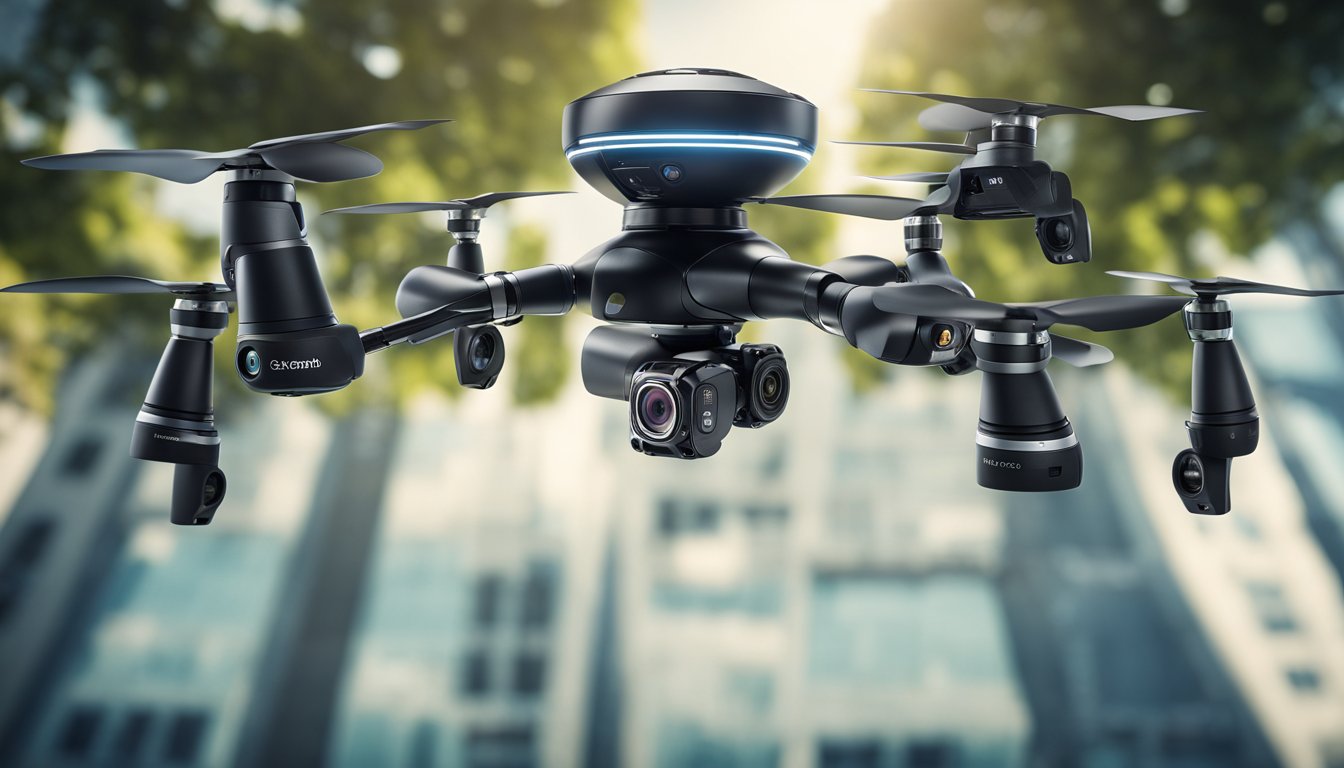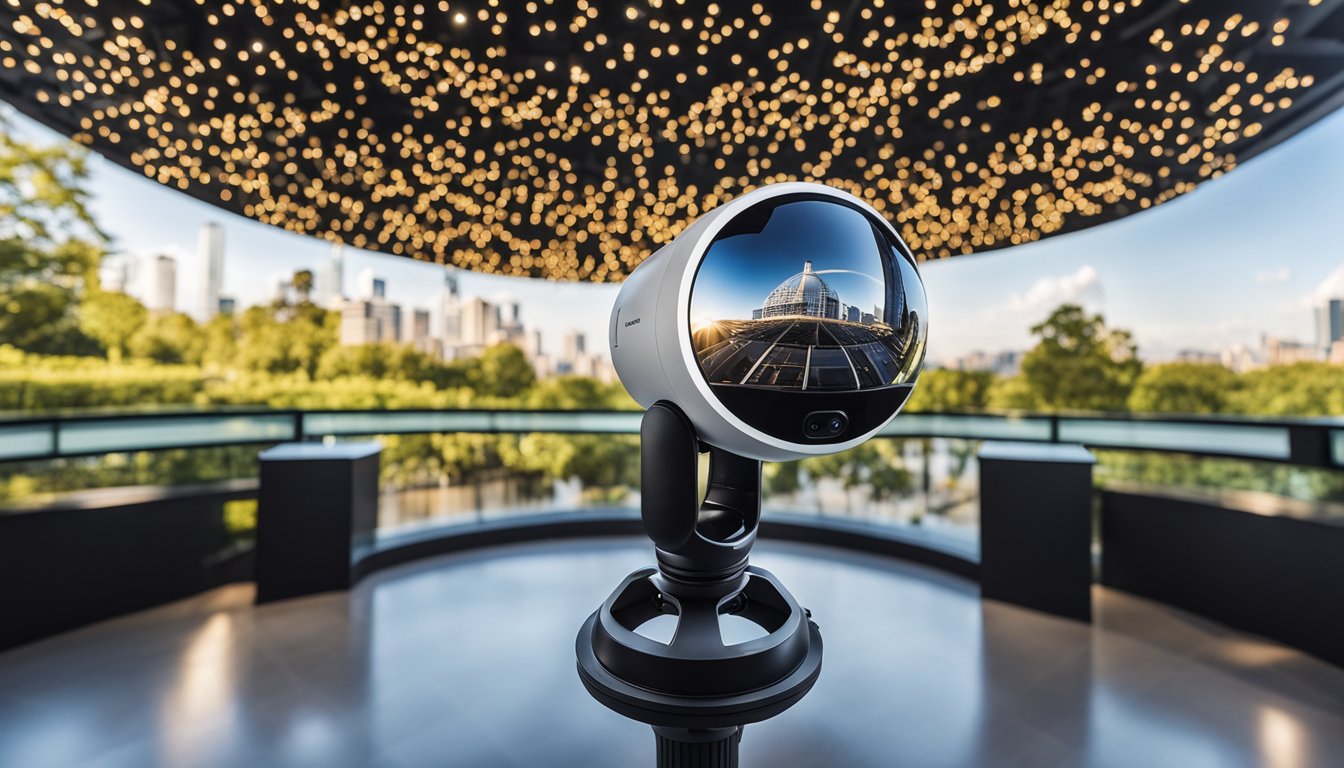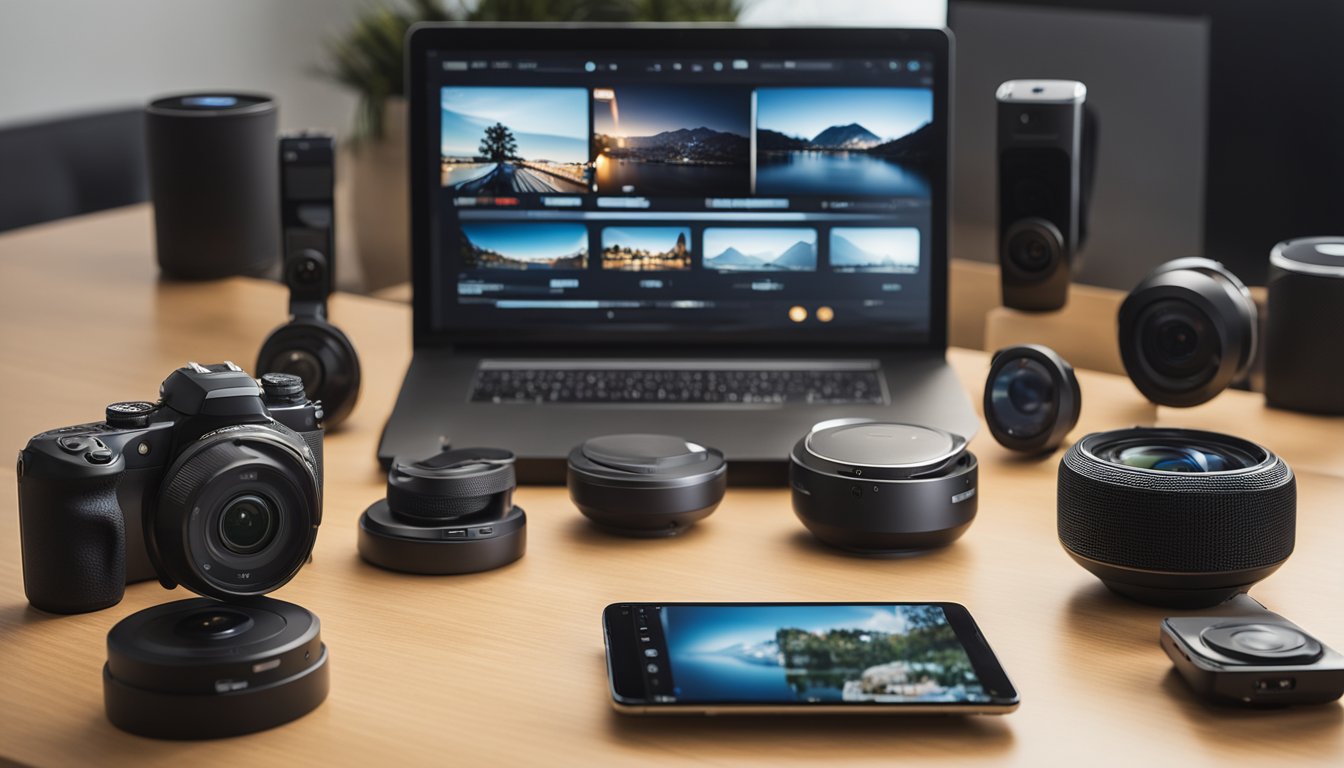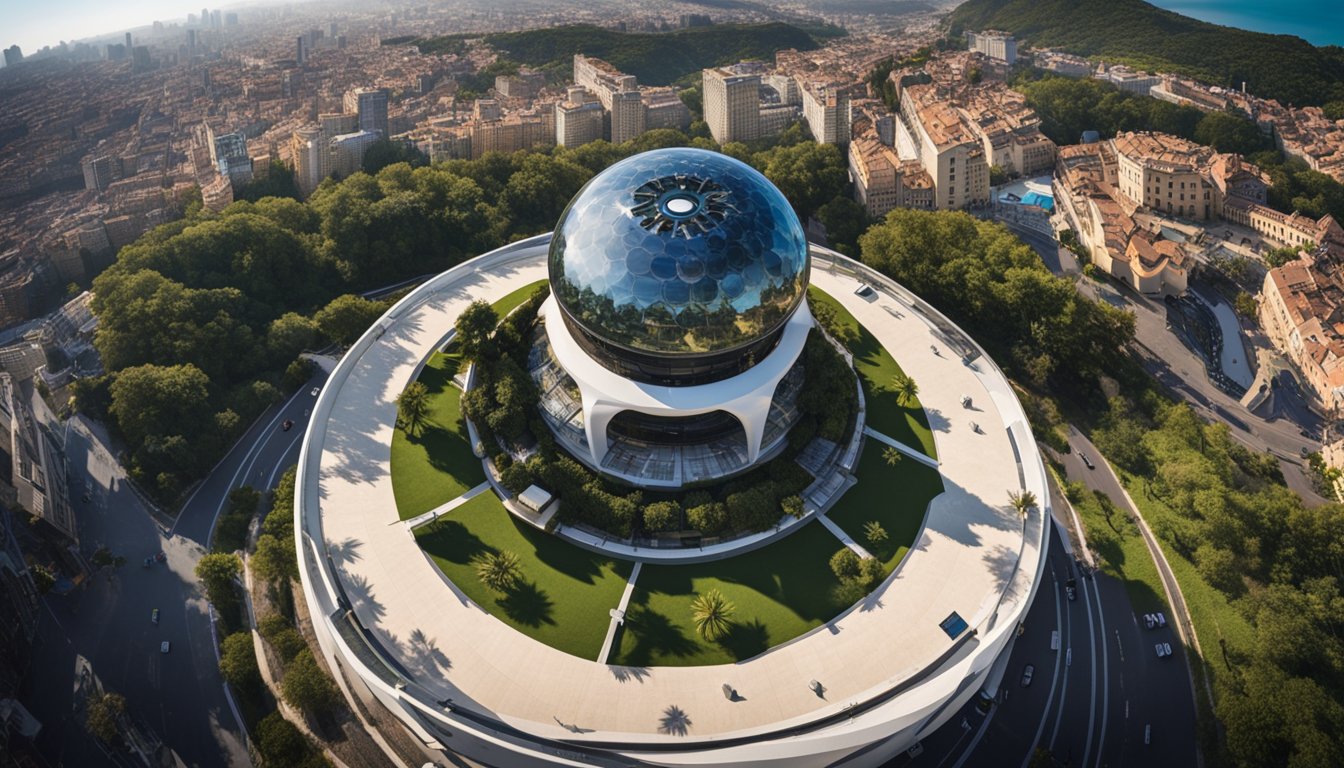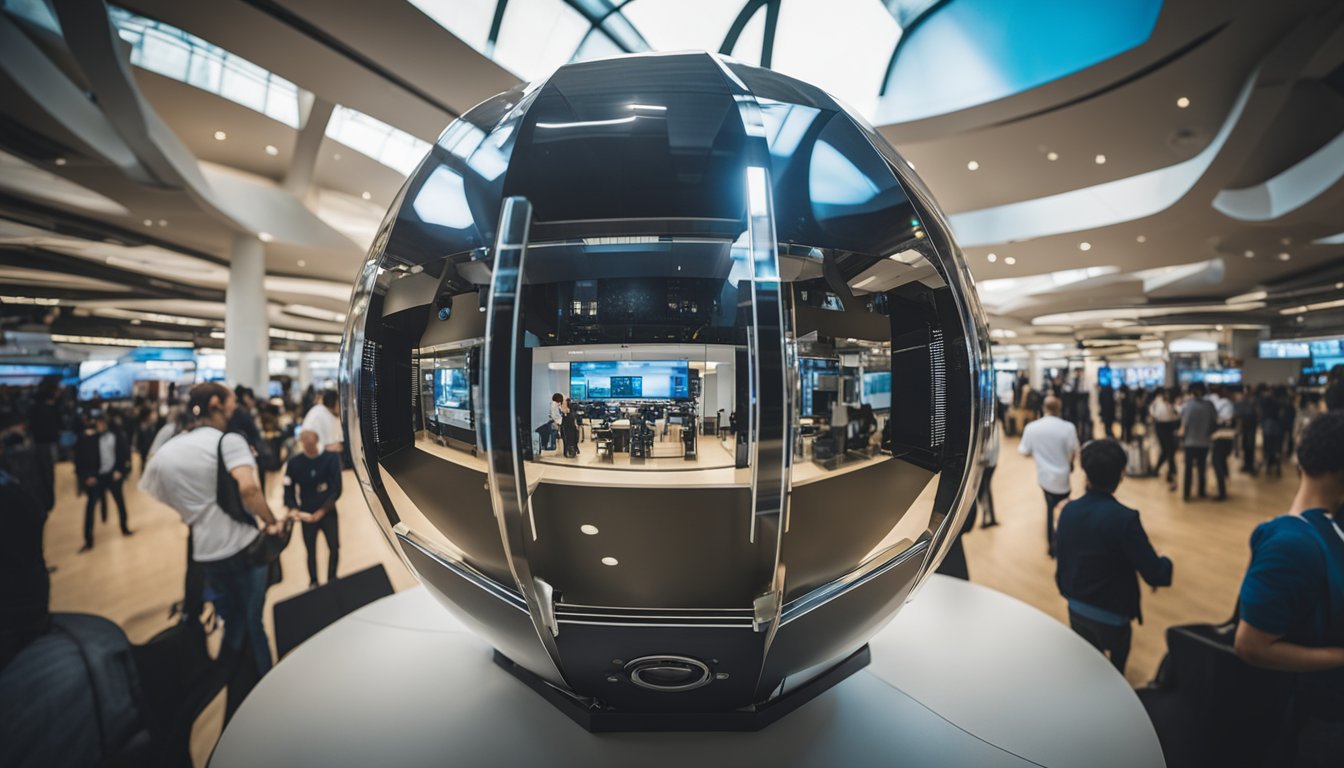If you’re curious about the history of 360-degree cameras, you might be wondering when these innovative devices were first launched. The answer is that the first 360-degree camera was launched in 2014 by a company called Giroptic. This camera was designed to capture spherical images and videos, giving viewers a complete view of their surroundings.
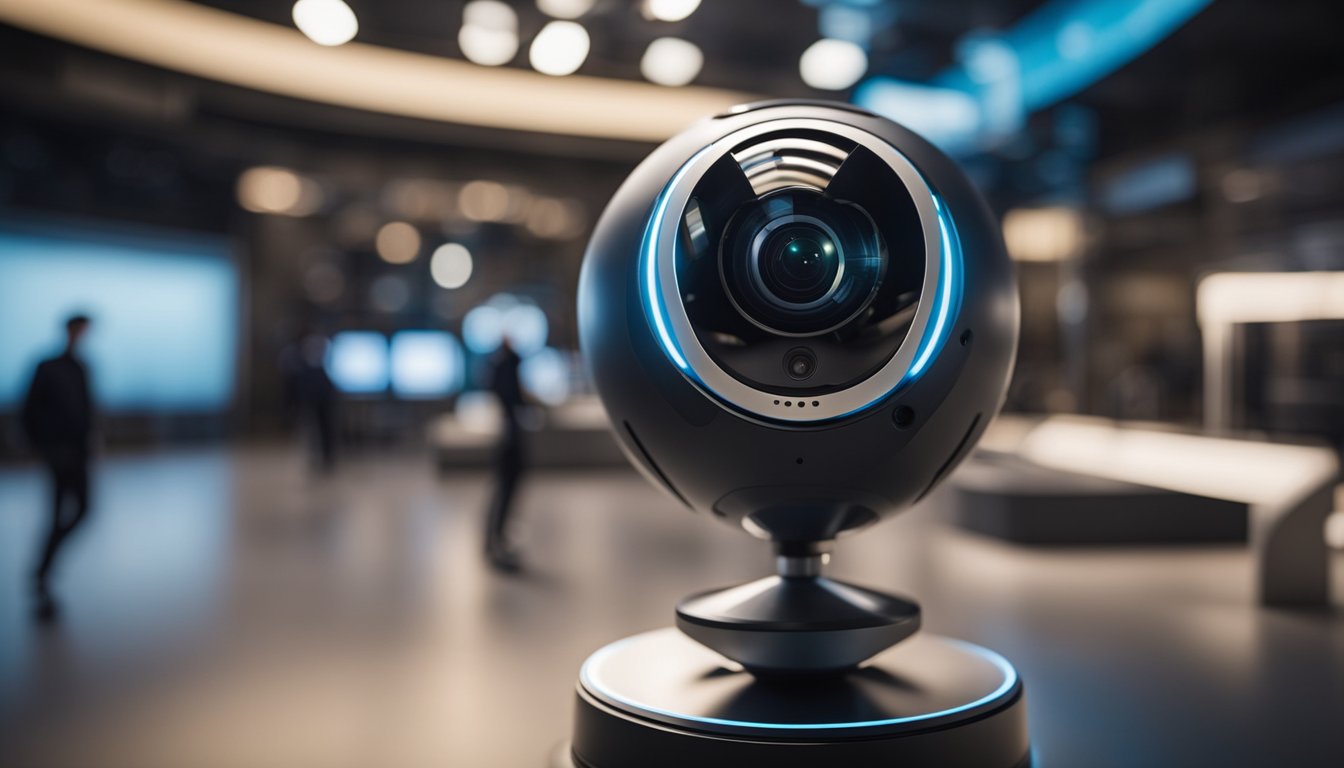
Since then, 360-degree cameras have come a long way, with many different models and brands available on the market. These cameras have become increasingly popular in recent years, thanks to their ability to capture immersive content for virtual reality experiences and social media platforms. They have also been used in a variety of industries, from real estate to tourism to journalism.
Key Takeaways
- The first 360-degree camera was launched in 2014 by Giroptic.
- 360-degree cameras have evolved significantly since their launch and are now used in a variety of industries.
- These cameras are popular for creating immersive content for virtual reality experiences and social media platforms.
Evolution of 360-Degree Cameras
https://www.youtube.com/watch?v=kX6Klp35f4s&embed=true
If you’re interested in photography or videography, you’ve probably heard of 360-degree cameras. These cameras are capable of capturing a full 360-degree view of the surrounding environment, allowing viewers to experience the entire scene as if they were physically present.
From Panoramic Shots to Spherical Videos
The earliest version of the 360-degree camera was the panoramic camera, which was invented in the late 18th century by English painter Robert Barker. Panoramic cameras were able to capture wide-angle views of landscapes and cityscapes, but they were limited in their ability to capture a full 360-degree view.
Fast forward to the early 2000s, and the first 360-degree cameras were introduced to the market. These cameras were capable of capturing a full 360-degree view of the surrounding environment, but they were bulky and expensive, making them inaccessible to most consumers.

However, with advancements in technology, 360-degree cameras became more compact and affordable. Today, there are many different models of 360-degree cameras available on the market, ranging from budget-friendly options to professional-grade cameras.
Key Technological Milestones
One of the most significant technological milestones in the evolution of 360-degree cameras was the introduction of the Ricoh Theta S in 2015. This camera was one of the first consumer-grade 360-degree cameras that was both affordable and easy to use. The Theta S was able to capture high-quality 360-degree images and videos, and it quickly became popular among consumers and content creators alike.
Another important milestone was the introduction of the Insta360 in 2016. This camera was designed to be used with a smartphone, making it even more accessible to consumers. The Insta360 was also capable of capturing 360-degree video, which was a major breakthrough in the world of virtual reality.
Today, 360-degree cameras and 360-degree video are more popular than ever before. They are being used in a wide range of applications, from virtual tours of real estate properties to immersive video games. As technology continues to advance, it’s likely that we will see even more exciting developments in the world of 360-degree cameras and virtual reality.
Notable 360-Degree Camera Models
« Do Teslas Have 360 Camera? Exploring Tesla’s Camera Features
When Was 360 Camera Invented: A Brief History of 360-Degree Cameras »
When it comes to 360-degree cameras, there are a few notable models that have made an impact on the market. In this section, we will highlight some of the most popular and innovative 360-degree camera models.
GoPro’s Entry into 360 Cameras
GoPro is a well-known brand in the action camera market, and they entered the 360-degree camera market with the GoPro Fusion. The Fusion was released in 2017 and was designed for both consumer and professional use. It features two 180-degree lenses that can capture 5.2K video at 30 frames per second. The camera also has built-in stabilization and can capture 18-megapixel photos.
Ricoh Theta Series
The Ricoh Theta series is another popular line of 360-degree cameras. The latest model, the Ricoh Theta Z1, was released in 2019 and features two 1-inch sensors that can capture 23-megapixel photos and 4K video at 30 frames per second. The camera also has built-in stabilization and can capture RAW images.
Insta360 Innovations
Insta360 has been making waves in the 360-degree camera market with their innovative designs. The Insta360 One R is a modular camera that allows you to switch between different lenses, including a 360-degree lens. The camera can capture 5.7K video at 30 frames per second and has built-in stabilization. The Insta360 One R is also waterproof up to 5 meters without a case.
In conclusion, the 360-degree camera market has seen some impressive innovations in recent years. From GoPro’s entry into the market with the Fusion, to Ricoh’s Theta series and Insta360’s modular One R, there are plenty of options for anyone looking to capture immersive 360-degree content.
Technical Aspects of 360 Cameras
When 360 cameras were first launched, they were quite bulky and expensive. However, with advancements in technology, they have become more user-friendly, affordable, and accessible. In this section, we will discuss some of the technical aspects of 360 cameras that you should be aware of.
Understanding Resolution and Frame Rates
Resolution and frame rates are two important technical aspects of 360 cameras. Resolution refers to the number of pixels in an image or video. The higher the resolution, the sharper and clearer the image or video will be. Most 360 cameras today have a resolution of at least 4K, which is four times the resolution of Full HD.
Frame rate, on the other hand, refers to the number of frames per second (fps) in a video. The higher the frame rate, the smoother the video will be. Most 360 cameras today have a frame rate of at least 30 fps, which is the standard for smooth video playback.
The Importance of Sensors and Processing
360 cameras use sensors to capture images and videos from all angles. These sensors are responsible for capturing the light and converting it into digital signals that can be processed by the camera’s software. The quality of the sensors used in a 360 camera is crucial for the quality of the final output.
The processing power of a 360 camera is also important. The camera’s software processes the digital signals captured by the sensors and stitches them together to create a seamless 360-degree image or video. The processing power of a camera determines how quickly and accurately it can stitch the images together.
In conclusion, understanding the technical aspects of 360 cameras is important if you want to make informed decisions when purchasing one. Pay attention to the camera’s resolution, frame rate, sensors, and processing power to ensure that you get the best possible output.
360 Cameras in Virtual Reality
https://www.youtube.com/watch?v=gStdXBJ9cGY&embed=true
If you are interested in creating immersive virtual reality experiences, a 360-degree camera is an essential tool. These cameras capture everything around them, allowing you to create a fully immersive experience for your viewers.
Creating Immersive VR Experiences
360-degree cameras are ideal for creating immersive VR experiences because they capture everything around them. This means that your viewers can look in any direction and see the entire environment, making them feel like they are really there.
To create a truly immersive experience, you can use a VR headset. A VR headset allows your viewers to look around the environment just as they would in real life. This creates a sense of presence that is unmatched by any other medium.
Compatibility with VR Headsets
Most 360-degree cameras are compatible with VR headsets. This means that you can create immersive VR experiences that are compatible with a wide range of VR headsets, including those that use 6DOF (six degrees of freedom) technology.
When choosing a 360-degree camera for VR, it is important to consider the resolution and frame rate. Higher resolution and frame rates will result in a more immersive experience, but they also require more processing power and storage space.
In conclusion, if you are interested in creating immersive virtual reality experiences, a 360-degree camera is an essential tool. With a 360-degree camera, you can create fully immersive experiences that are compatible with a wide range of VR headsets.
Usage in Various Industries
360-degree cameras have revolutionized the way we capture and showcase experiences. With their ability to capture everything around them, they have found their way into various industries. Here are two industries where 360-degree cameras are making a significant impact.
Real Estate and Interior Showcasing
360-degree cameras are becoming increasingly popular in the real estate industry. They allow you to create virtual tours of properties, giving potential buyers the ability to explore a property from the comfort of their own home. By using a 360-degree camera, you can capture every detail of a property, including the layout, decor, and natural lighting. This technology has become an essential tool for real estate agents, architects, and interior designers.
In addition to virtual tours, 360-degree cameras can also be used for interior showcasing. By capturing a room in its entirety, you can create an immersive experience for your audience. This is particularly useful for interior designers who want to showcase their work in a unique and engaging way. With a 360-degree camera, you can capture the entire room, including all the details that make it special.
Action Sports and Adventure Recording
360-degree cameras have also found their way into the world of action sports and adventure recording. With their ability to capture everything around them, they are perfect for capturing extreme sports and outdoor activities. They can be mounted on helmets, drones, or tripods, giving you the ability to capture every angle of the action.
Action cams such as GoPro and Insta360 are perfect for capturing extreme sports. They are small, lightweight, and can be mounted on just about anything. With their rugged design, they can withstand harsh environments and capture high-quality footage. Drones are also becoming increasingly popular for adventure recording. With their ability to fly high above the action, they can capture stunning aerial footage that was once impossible to capture.
In conclusion, 360-degree cameras have found their way into various industries, from real estate to action sports. They are changing the way we capture and showcase experiences, providing a unique and immersive perspective. Whether you are a real estate agent, interior designer, or extreme sports enthusiast, a 360-degree camera is a valuable tool to have in your arsenal.
Integration with Social Media Platforms
https://www.youtube.com/watch?v=E9XUN0hA_Hw&embed=true
With the increasing popularity of 360-degree cameras, social media platforms have started to integrate this technology to enhance user experience. Sharing spherical videos and images on social media has become easier than ever before. In this section, we will discuss how 360-degree cameras integrate with social media platforms such as Facebook, Instagram, and Twitter.
Sharing Spherical Videos on Facebook
Facebook has been one of the first social media platforms to integrate 360-degree cameras. You can easily share 360-degree videos and images on Facebook by uploading them directly from your camera or smartphone. Facebook supports 360-degree videos up to 8K resolution, making it perfect for professional use. You can also use the Facebook app to create 360-degree photos by taking a panoramic photo on your smartphone and uploading it to Facebook.
Facebook also allows you to add interactive elements to your 360-degree videos, such as text, images, and links. This makes it an excellent platform for businesses to showcase their products and services in an engaging and interactive way.
360-Degree Content on Instagram and Twitter
Instagram and Twitter have also started to integrate 360-degree cameras to enhance user experience. You can easily share 360-degree photos and videos on Instagram and Twitter by uploading them directly from your camera or smartphone. However, Instagram and Twitter do not support 360-degree videos natively. You can only upload 360-degree videos as regular videos, which means users will have to use their fingers to pan around the video to view it in 360 degrees.
Despite this limitation, 360-degree cameras are still an excellent tool for creating engaging content on Instagram and Twitter. You can use 360-degree cameras to create stunning panoramas, time-lapse videos, and even stop-motion animations. With the right editing software, you can create unique and engaging content that will stand out on social media platforms.
In conclusion, social media platforms have started to integrate 360-degree cameras to enhance user experience. You can easily share 360-degree photos and videos on Facebook, Instagram, and Twitter by uploading them directly from your camera or smartphone. With the right editing software, you can create unique and engaging content that will stand out on social media platforms.
360 Cameras and Mobile Devices
With the advancements in technology, 360-degree cameras have become more accessible to the general public. One of the most significant developments in recent years has been the compatibility of 360-degree cameras with mobile devices. This development has made it easier for people to capture and share their experiences in 360 degrees.
Smartphone Compatibility
Many 360-degree cameras now come with smartphone compatibility, meaning that you can connect your camera to your phone via Bluetooth or Wi-Fi. This allows you to control your camera remotely, view your footage, and share it on social media platforms directly from your phone. Some cameras even have dedicated apps that allow you to edit your footage on your phone.
Portable and User-Friendly Designs
360-degree cameras have become more portable and user-friendly over time. With their compact size and lightweight designs, they are easy to carry around and use on the go. They also come with intuitive controls that make it easy for anyone to use them.
Furthermore, many 360-degree cameras now have built-in batteries that can last for several hours, meaning that you can capture your experiences without worrying about running out of power. Some cameras even have water-resistant designs that make them suitable for outdoor activities.
In conclusion, the compatibility of 360-degree cameras with mobile devices has made it easier for people to capture and share their experiences in 360 degrees. With their portable and user-friendly designs, these cameras are perfect for anyone looking to capture their adventures in a unique and immersive way.
Enhancements in Camera Features
With the advancement of technology, 360-degree cameras have undergone significant improvements in their features. In this section, we will discuss some of the latest enhancements in camera features that have made these cameras more versatile and user-friendly.
Waterproof Capabilities
Waterproof capabilities are one of the most important features of 360-degree cameras. With waterproofing, you can take your camera to the beach, pool or any other wet environment without worrying about damaging it. Some of the latest 360-degree cameras come with waterproofing up to a certain depth, making them ideal for capturing underwater footage.
Stabilization and Omnidirectional Recording
Stabilization is another important feature that has been added to 360-degree cameras. With stabilization, you can capture smooth and steady footage even when you are moving. This feature is especially useful when you are recording while walking or running. Omnidirectional recording is another feature that has been added to 360-degree cameras. With this feature, you can capture footage in all directions, making it ideal for capturing immersive experiences.
In conclusion, the latest enhancements in camera features have made 360-degree cameras more versatile and user-friendly. With waterproofing, stabilization, and omnidirectional recording, you can capture high-quality footage in any environment.
Content Creation and Vlogging
https://www.youtube.com/watch?v=6HGgoXpnfBk&embed=true
Creating content for vlogs and social media has become more accessible than ever before. With the rise of 360-degree videos and spherical cameras, vloggers and content creators have the opportunity to create immersive experiences that transport viewers to new worlds.
Vloggers Embracing 360 Cameras
Many vloggers have started embracing 360 cameras for their content creation. With a 360 camera, you can capture your surroundings and give your viewers a sense of being there with you. It’s a great way to transport your audience to new places and create a more engaging experience.
360 cameras are also great for capturing action shots. Whether you’re skiing down a mountain or riding a bike through the city, a 360 camera can capture all the action and give your viewers a sense of what it’s like to be there with you.
The Rise of Spherical Video Reviews
Spherical video reviews are becoming more popular as well. With a spherical camera, you can capture a product from all angles and give your viewers a better sense of what it looks like in real life. This is especially useful for products that are difficult to capture in traditional video formats.
Spherical video reviews are also great for showcasing products in action. Whether you’re reviewing a new drone or a kitchen gadget, a spherical camera can capture all the action and give your viewers a better sense of how the product works.
In conclusion, 360-degree videos and spherical cameras have opened up new possibilities for content creation and vlogging. With these technologies, vloggers and content creators can create more engaging and immersive experiences for their audiences.
360 Cameras in Space Exploration
https://www.youtube.com/watch?v=PsSvqvK_3Zo&embed=true
If you’re a space enthusiast, you’re probably familiar with the concept of 360 cameras in space exploration. These cameras are designed to capture a complete view of the environment in all directions, making them an invaluable tool for space missions. In this section, we will explore the use of 360 cameras in space exploration and how they have been used by NASA.
NASA’s Use of 360 Cameras
NASA has been using 360 cameras for many years now, and they have proven to be extremely useful in space exploration. These cameras are used to capture images of the environment in all directions, allowing NASA to get a complete view of the environment. This has been particularly useful in missions to other planets, such as Mars, where the environment is vastly different from Earth.
One example of NASA’s use of 360 cameras is the Mastcam-Z camera system on the Perseverance Mars rover. This camera system is capable of capturing high-resolution images of the Martian surface in 360 degrees. These images are then sent back to Earth, where they are analyzed by scientists to better understand the Martian environment.
Capturing the Surface of Other Planets
360 cameras have also been used to capture the surface of other planets in incredible detail. For example, the Mastcam-Z camera system on the Perseverance Mars rover has captured stunning images of the Martian surface, including the Jezero Crater, which is believed to have once been a lake.
In addition to the Mastcam-Z camera system, NASA has also used other 360 cameras in space exploration. For example, the Curiosity Mars rover used a 360 camera to capture images of the Martian surface in 2012. These images provided scientists with a better understanding of the Martian environment and helped them to plan future missions to the planet.
In conclusion, 360 cameras have proven to be an invaluable tool in space exploration. They have allowed NASA to capture images of the environment in all directions, providing scientists with a complete view of the environment. This has been particularly useful in missions to other planets, where the environment is vastly different from Earth.
Frequently Asked Questions
How is a 360-degree camera utilized in vehicles?
A 360-degree camera system is used in vehicles to provide a bird’s eye view of the surroundings. The camera captures images from multiple angles and then processes them to create a composite view of the vehicle’s surroundings. This view is displayed on the car’s infotainment screen, allowing the driver to see the entire area around the car and avoid obstacles.
What are the common uses for a 360-degree camera?
360-degree cameras are used in a variety of applications, including virtual tours, real estate listings, and event coverage. They are also used in the film industry to capture panoramic shots.
Can you explain the technology behind 360-degree cameras?
360-degree cameras use multiple lenses to capture images from different angles simultaneously. The images are then stitched together to create a panoramic view. Some 360-degree cameras use a single lens and a mirror to capture 360-degree images.
What is unique about a 360-degree lens?
A 360-degree lens is unique because it captures images from all directions simultaneously. This allows the viewer to see the entire environment in which the camera is placed.
What are the steps to capturing a 360-degree video?
To capture a 360-degree video, you need a 360-degree camera. The camera captures images from all directions simultaneously. Once the footage is captured, it is stitched together to create a panoramic view. Some 360-degree cameras have built-in software that does this automatically.
Which was the first vehicle to feature a 360-degree camera?
The Infiniti EX35 was the first vehicle to feature a 360-degree camera system. The system was launched in 2007 and was called the Around View Monitor. It used four cameras to provide a bird’s eye view of the car’s surroundings.

